To discuss the shape of future mobile phones, "folding" is a topic that cannot be avoided.
In early September this year, International Data Corporation (IDC) released the latest mobile phone quarterly forecast report. The report shows that the shipment of China’s folding screen mobile phone market is expected to be about 10.68 million units in 2024, an increase of 52.4% year-on-year. Extending the time to 2028, the forecast number will exceed 17 million units, with a five-year compound growth rate of 19.8%.
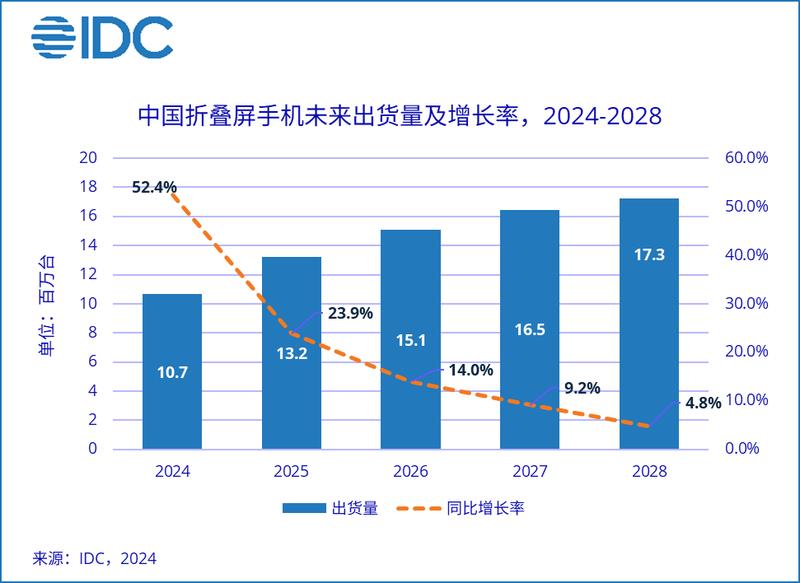
Future shipments and growth rates of folding screen mobile phones in China | IDC
Sustainability and growth are the future that folding screen mobile phones are embracing. However, just when the market believes that the form of "horizontal" and "vertical" has been determined and begins to compete in the internal and external screen functions, Huawei will expand the folding track to a position that the entire industry has never reached:Trifold…
On September 10, Huawei brought a new flagship folding Huawei Mate XT Extraordinary Master, which once again defined "what is a folding screen" on the basis of the whole series of folding product lines of vertical folding, horizontal inner folding, and horizontal outer folding.
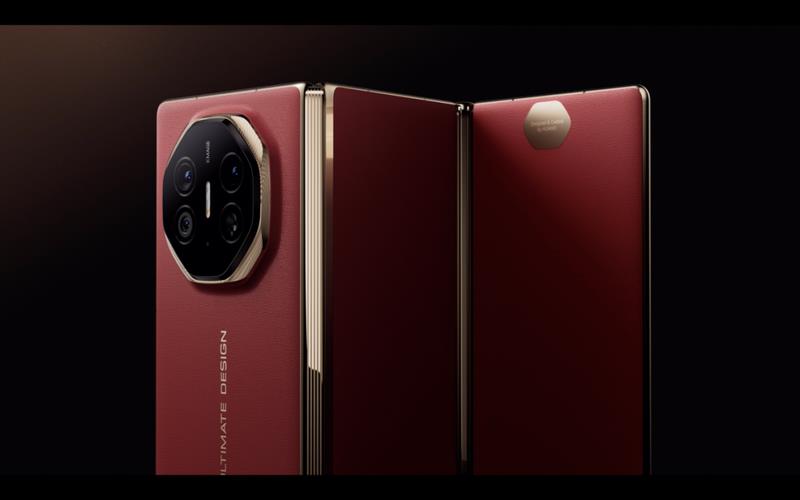
Previously, some manufacturers have also released triple-fold concept phones, and Huawei has brought it to the mass-produced product line for the first time.
Mass production means a breakthrough in all aspects of technologyWhen a product is delivered from the showcase to the consumer, it must be the new technology that has been designed, tested and validated countless times.
As Huawei’s end point BG CTO said in an interview "Dare to think in order to reduce the dimension", Huawei has put forward extremely strict requirements for the triple-folding screen mobile phone, not only to maintain the same grip feel as the traditional straight-board mobile phone in the folded state, but also to place two hinges in a small space, and also bring a comprehensive flagship experience. It is Huawei’s requirements for product upgrades that have brought about a comprehensive breakthrough in the triple-folding mobile phone.
Behind the three folds is technological innovation
Since the birth of the folding screen, the selling point has shifted from "stunning when opened" to "all-round experience".
If you don’t talk about unfolding, what is the difference between the folding screen and the ordinary smartphone? The folding screen is difficult to achieve the ultimate good, because it is itself a device that "wants, wants, and wants".
Among them, the first point ishingeIn the folding screen, the hinge has always been a "skeleton". On the one hand, the hinge, as the core support structure of the entire screen, needs to ensure the accurate linkage of the screen axis.
On the other hand, the hinge is also a key factor that directly affects the lifespan of the device, reducing the impact during folding and unfolding, and protecting internal components and screens from damage.
Therefore,The development history of folding screens can also be regarded as the development history of hinge technologyWhen the folding screen comes to the three-fold era, if the existing hinge solution is to be used directly, the thickness of the whole machine will inevitably increase. In order to ensure a slim body, a new hinge technology is essential
In addition to the leading double-rotating eagle wing hinge and double-rotating water drop hinge, Huawei has given a hinge solution exclusive to three folds: Huawei Tiangong Hinge System. Huawei Mate XT Extraordinary Master adopts the solution of using both inner and outer folds on one machine. On top of thinness, it realizes the same opening and feel inside and outside and stability during opening and closing, and further realizes the precise linkage of the screen axis.
In order to ensure the thickness of the folding screen body of the whole machine, Huawei adopts different structures for the inner folding and outer folding hinge parts. For the inner folding hinge part, Huawei uses an embedded sliding structure. Compared with the traditional hinge, this solution can provide relative sliding space while the hinge rotates. The thickness of the hinge is reduced by 16% by using the plane motion compensation space movement, which limits the folding space.
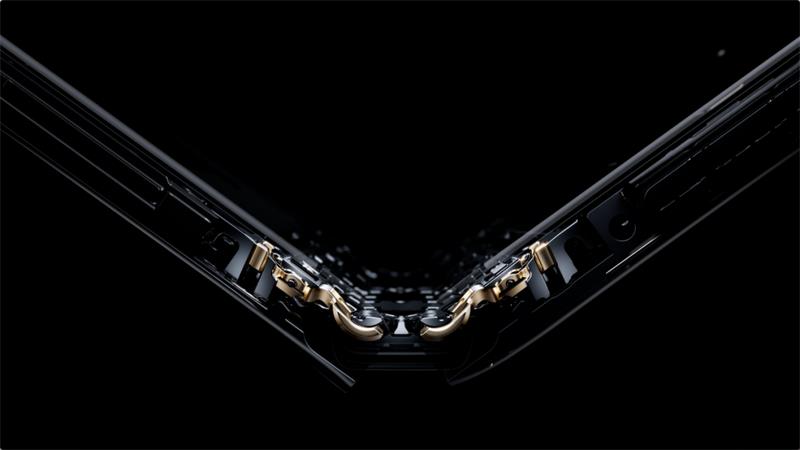
In the outer folding hinge part, Huawei has brought a thinner overall structure than the previous generation through the embedded integrated linkage structure.
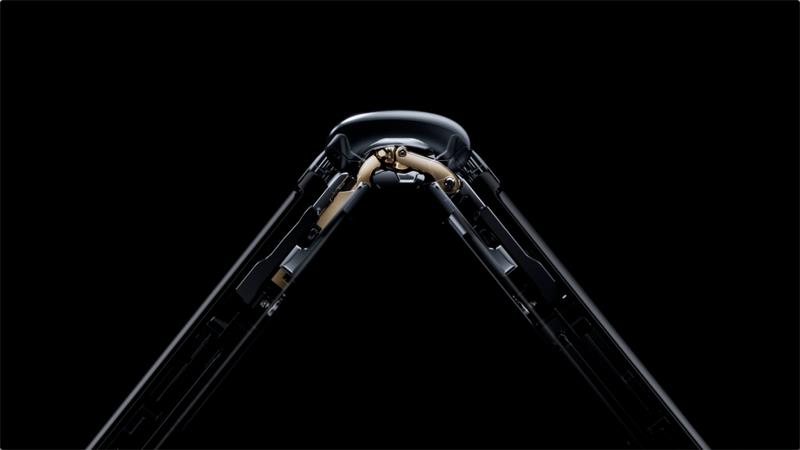
Smaller space also means the challenge of miniaturizing components. In each hinge shaft, Huawei also delicately stuffed different support arms and connectors, including gears with a radius of less than 1mm. In order to ensure mechanical strength, the core components of the Huawei Mate XT Extraordinary Master hinge are made of super-strong rocket steel with a deformation resistance of 1900MPa, which provides reliable support for the movement of the shaft, so that it can not only maintain consistent strength in long-term use, but also last forever.
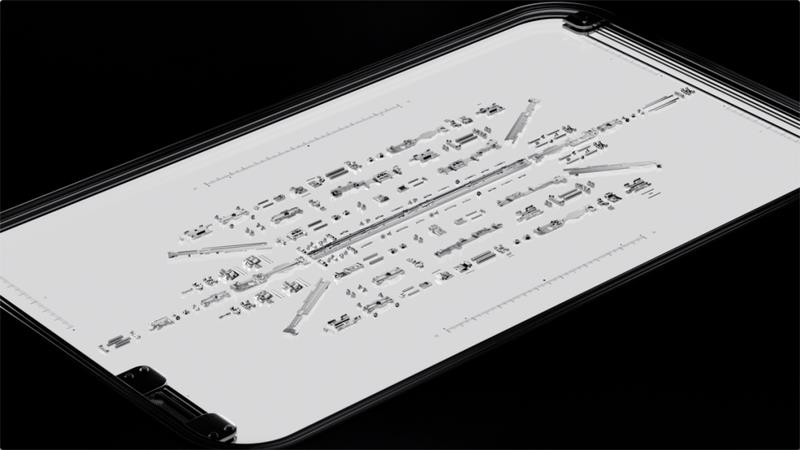
According to a number of patents published by Huawei recently, Huawei Mate XT extraordinary master realizes a new folding end point product form through the two-axis linkage architecture scheme. Through constant length design, water drop screen design, and two-axis linkage control, the screen is protected intact.
The hinge provides a stable base for the folding screen.Flexible screenIt is another challenge for the availability and durability of folding screens: how can the most fragile screens on traditional mobile phones be folded again and again?
Since the development of folding screens, OLED technology based on flexible substrate design has gradually matured. A screen itself is made of multiple layers of panels of different materials and functions stacked together. It is because of this multi-layer structure that different compartments will deform to varying degrees due to stress changes during the bending process of the screen. Therefore, for common infold screens,extrusion resistanceIt is particularly important, and the relative external folding folding screen needs to be considered when designingtensile resistance…

But for the three-fold screen, the structural design of the inner fold and the outer fold needs to take into account both properties. In order to achieve the three-fold, Huawei has developed a multi-directional bending flexible material, which is a chain-like molecular structure, and the weak intermolecular interaction makes the screen’s bending capacity enhancement 25%. The advantages of the multi-directional bending flexible material allow the screen to achieve external folding resistance to stretching and internal bending resistance to extrusion at the same time, and also allow the screen to finally achieve a smooth folding effect, so that the whole machine can achieve omnidirectional bending from -180 ° to + 180 °.
Although the material is good, it is not easy to use it for the product. This material itself is a hydrophilic solvent-based material. In order to achieve the requirements of mass production, Huawei has further overcome the problem of low-temperature purification and curing in the manufacturing process.
In order to make the folding screen silky and supple when opened and closed, rigid and durable when used, and achieve the characteristics of "soft with rigid", in addition to multi-directional bending flexible materials, Huawei also applied ultra-thin flexible glass (UTG) and non-Newtonian fluid materials to this screen. Non-Newtonian fluid materials are strong when they are strong, and soft when they are soft, which improves the impact resistance of the screen and greatly increases the strength of the screen. Ultra-thin flexible glass imparts impact resistance and high strength, which can prevent small accidents in the use of mobile phone screens.
The folding effect of the screen is the basis for the folding screen to achieve "usable", and the ultimate display effect on top of this is the ultimate pursuit of the folding screen. Huawei Mate XT Extraordinary Master brought a resolution of 2232 x 3184 to this screen up to 10.2 inches, achieving a 3K Huawei Pro large screen. Whether watching movies, browsing photos, or creating, this screen can perfectly present unprecedented delicacy and extreme rich colors.
It requires both hinge technology and flexible screen. On top of these two hard powers, the folding screen will also face an ultimate test:Screen axis linkage…
Although the flexible screen can be folded, it does not have excellent ductility. This means that in the process of bending and unfolding, the hinge needs precise telescopic control to match the changes of the flexible screen. Huawei has designed a micron-level digital twin model for this purpose. Through the grid simulation with micron-level accuracy, the key parameters such as the hinge telescopic amount and the door panel motion angle are repeatedly adjusted to determine the optimal linkage trajectory.
At the same time, in order to find the "best feel" during the opening and closing process, Huawei’s quantitative mechanics analysis and user research, through human factors iterative optimization, finally defined the optimal opening and closing force curve to ensure the silky opening and closing process. The first multi-drive adjustment system uses up to 26 precision cams to finely adjust the opening and closing feel, accurately fitting the opening and closing force curve, thus achieving the best opening and closing feel experience.
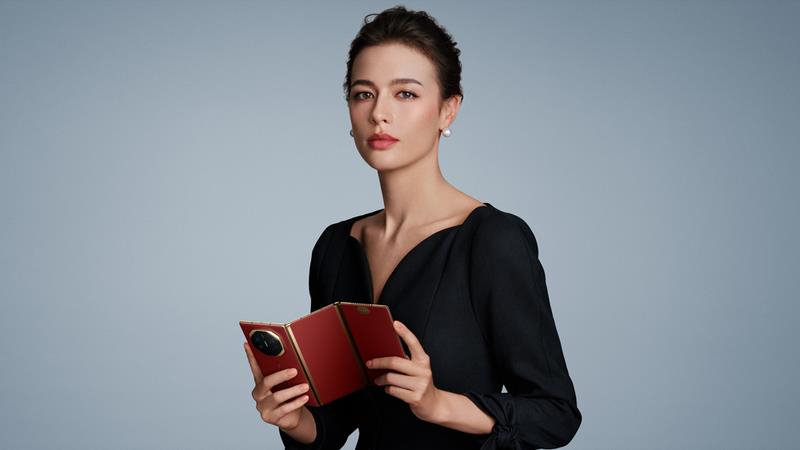
In addition to the key technologies of the hinge and screen, Huawei Mate XT Extraordinary Master redesigned the internal structure of the whole machine, finally presenting the first thinner to 3.6 mm, equipped with a large 5600mAh battery, and supports Huawei’s full-scene super fast charging.
Unlike the mature development of touch-screen mobile phones, the new form of folding screens can be described as a reconstruction of the concept of mobile phones. Because of this, continued investment in technology has become an insurmountable barrier.
Huawei began to lay out folding machines in 2019, and has been the dominant position in the folding screen mobile phone industry ever since. In fact, long before this, Huawei has already begun to invest in the research and development of key technologies for folding screens. In 2016, Huawei began to overcome the problem of water drop hinges, and from that moment on, Huawei has stood in the leading position in the industry.
But Huawei, which engraves its innovative genes in its bones, will never be satisfied with the status quo. It not only continuously enhances the experience of existing folding screens, but also brings its deep accumulation in the folding field to a unique track.
Continuous investment in research and development has given Huawei the confidence to innovate, and its daring attitude has also allowed it to continuously break through the status quo of the industry and stay at the forefront of technological innovation.
This is also why the three-fold is none other than Huawei.
The beauty of compromise:
Harmony in form, development in experience
Just when people are still asking "what is the use of a folding screen?", Huawei has brought a unique and extraordinary experience to this triple-folding screen.
In terms of aesthetic design, Huawei has long been at the forefront of the times. Whether it is the delicate polishing of the fuselage material or the calm matching of the body color, each Huawei mobile phone can bring a distinct and unique aesthetic style. On the Huawei Mate XT Extraordinary Master, Huawei has continued the iconic octagonal star diamond design on the back of the Extraordinary Master series, so that the sense of technology of the camera group is integrated into the texture of plain leather. The rock vein texture design created through 78 processes such as "stacking, forging, and twisting" makes each mobile phone have a unique brand.
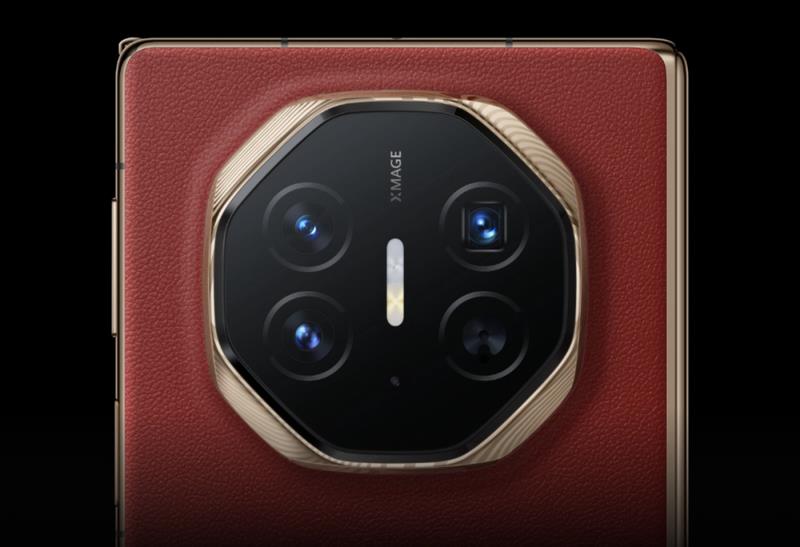
The addition of system-level AI has turned this tri-fold into a large-screen intelligent assistant that can be put in the pocket. Xiaoyi, the intelligent assistant carried by Huawei’s Mate XT extraordinary master, relies on Huawei’s self-developed Pangu model, which has system-level AI capabilities and can accurately understand consumer intentions, create efficient and convenient productivity tools, and help consumers complete various tasks more efficiently.
The larger screen and the ultimate imaging system bring a different shooting experience. Huawei Mate XT Extraordinary Master is equipped with a ten-speed variable aperture and an optical periscope telephoto lens, which brings stable production effects under different light conditions. The triple-folding large screen supports up to 6 pictures in the same frame for comparison, which can preview the details of different photos and quickly filter out the exciting ones in the complicated photos.
The experience brought by the tri-fold is just the beginning. The new device form gives people more imagination, and the mature technical support makes the tri-fold a new path to future technology.
In 1984, Psion released the Organiser, the first personal digital assistant (PDA), carrying people’s original dream of "putting a computer in your pocket". After the advent of the smartphone, this dream has gained unprecedented development, but it is still trapped in the small screen.
The appearance of the triple fold now makes the dream from 40 years ago finally come true.
Behind the dream is the technological strength revealed in countless details by the extraordinary master of Huawei Mate XT. Behind the three folds is the smart balance of flexibility and sturdiness.
The true dreamer would not stop at the same place. From two folds to three folds, not only one more fold, but also a qualitative change in technology. When Huawei opened the new track of three folds, it might inspire more technological possibilities.
Author: Owl
Cover image source: Huawei official